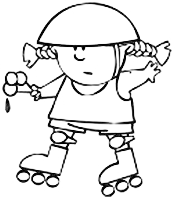A psychotherapy group for children and adolescents with obsessive compulsive disorder and other types of anxiety.
Does your child seem anxious? Does your child confess, constantly need reassurance, become easily frustrated, repeat acts, and seem too organized, rigid or perfectionistic? Does your child fear new social situations, separation from a parent or fear storms, death, germs, and failure? Then this group may help.Cognitive behavioral therapy (CBT) has been found to be an effective treatment of OCD. It helps the person identify the ideas, beliefs and behaviors associated with OCD, and ways of modifying them. This group is an 8 week program and it focuses on providing participants with information about OCD, practical strategies on managing OCD symptoms, general anxiety symptoms, depressive symptoms, and provides strategies for preventing or managing future worries.
This group was designed for children and an adolescents ages 8-13 experiencing anxiety or obsessive compulsive disorder. Cognitive behavioral therapy, exposure therapy and mindfulness techniques are used.
This group will help your child develop strategies to fight back compulsions and challenge repetitive and intrusive thoughts.Self-confidence and control will greatly improve and as a result the whole family will be able to relax!
- Teach yourchild how to identify and stop anxious thoughts.
- Provide education on the physiology of anxiety.
- Teach the relationship between thoughs, feelings, and behavior.
- Empower the child with skills and confidence.
- Normalize and offer suupport.
- Teach calming strategies and increase serenity.
- Complete exposures and face fears.


- Exaggerated fears of contamination from contact with certain people, or everyday items such as clothing, shoes, or schoolbooks.
- Excessive doubts that he/she has not locked the door, shut the window, turned off the lights, or turned off the stove or other household appliances.
- Marked over-concern with the appearance of homework assignments.
- Excessive worry about symmetrical arrangement of everyday objects.
- Fears of accidentally harminga parent, sibling, or friend.
- Superstitious fears that something bad will happen if a seemingly unconnected behavior is done (or not done).
- Compulsive washing, bathing, or showering.
- Ritualized behavrios in which the child needs to touch bodoy parts or perform bodily movements in a specific order or symmetrical fashion.
- Specific, repeated bedetime rituals that interfere with normal sleep.
- Compulsive repeating of certain words or prayers to ensure that bad things don't occur.
- Compulsive reassurance-seeking from parents or teachers about not having caused harm.
- Avoidance of situations in which t hey think"something bad" might occur.
- The need to confess.
